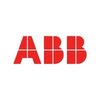

Brainware University



10+ Brainware University Interview Questions and Answers
Q1. 2. What are the differences between FDM, FVM and FEM?
FDM, FVM and FEM are numerical methods used for solving differential equations.
FDM (Finite Difference Method) approximates derivatives using finite differences
FVM (Finite Volume Method) approximates integrals over control volumes
FEM (Finite Element Method) approximates solutions using piecewise polynomial functions
FDM and FVM are typically used for structured grids, while FEM is used for unstructured grids
FEM is often used for problems with complex geometries or material prop...read more

Q2. 3. How you have considered the computational time?
I have considered computational time by optimizing algorithms and using efficient data structures.
I have analyzed the time complexity of algorithms and chosen the most efficient ones.
I have used data structures like hash tables and binary trees to reduce search time.
I have also parallelized certain tasks to reduce overall computational time.
For example, in my research on image processing, I used parallel computing to speed up the process.

Q3. 1. What is control volume FEM?
Control volume FEM is a numerical method used to solve fluid flow problems.
It involves dividing the fluid domain into control volumes and applying the finite element method to each volume.
The method is used to solve problems related to fluid dynamics, such as heat transfer, mass transfer, and fluid flow.
It is commonly used in engineering and physics applications.
An example of its use is in the design of heat exchangers or the analysis of fluid flow in pipes.

Q4. Explain the most important feature of Special Theory of Relativity
The most important feature of Special Theory of Relativity is the principle of relativity.
The principle of relativity states that the laws of physics are the same in all inertial reference frames.
This means that the physical laws and phenomena do not depend on the observer's motion.
It led to the concept of time dilation and length contraction.
For example, the famous equation E=mc^2 is a consequence of the principle of relativity.

Q5. DNA replication in prokaryotic system.
DNA replication in prokaryotic system involves initiation, elongation, and termination stages.
Initiation involves the binding of DnaA protein to the origin of replication
Elongation is carried out by DNA polymerase III, which adds nucleotides to the growing strand
Termination occurs when two replication forks meet at the termination site
Prokaryotic DNA replication is bidirectional and semi-conservative
Errors during replication are corrected by DNA polymerase proofreading and mi...read more

Q6. Describe FEM process
FEM process is a numerical technique used to solve complex engineering problems by dividing the problem into smaller elements.
FEM stands for Finite Element Method
It involves dividing a complex problem into smaller, simpler elements
Each element is represented by a set of equations to approximate the behavior of the entire system
The equations are then solved to obtain the overall solution of the problem
FEM is commonly used in structural analysis, heat transfer, fluid dynamics, ...read more

Q7. Give a lecture presentation on your subject area to show your teaching skills.

Q8. How you deal with feedback
I welcome feedback as an opportunity for growth and improvement.
Listen actively to understand the feedback given
Reflect on the feedback to identify areas for improvement
Take constructive criticism positively and use it to enhance skills
Seek clarification if needed to fully comprehend the feedback
Implement changes based on the feedback received


Q9. How you teach students
I teach students by creating interactive and engaging learning experiences tailored to their needs and learning styles.
Utilize a variety of teaching methods such as lectures, group discussions, role-playing, and hands-on activities
Provide real-life examples and case studies to make concepts more relatable
Encourage active participation and feedback from students to enhance their understanding
Use multimedia tools and technology to make learning more interactive and dynamic

Q10. How you solve problems
I solve problems by analyzing the root cause, brainstorming solutions, and implementing the best course of action.
Identify the problem and its root cause
Brainstorm potential solutions
Evaluate each solution based on feasibility and impact
Implement the best solution and monitor its effectiveness
Adjust the solution as needed

Q11. What is your aim?
My aim is to create a positive impact in the academic community by promoting innovation, inclusivity, and excellence.
To foster a culture of innovation by encouraging new ideas and experimentation
To promote inclusivity by ensuring equal opportunities for all students and faculty members
To strive for excellence by setting high standards and providing the necessary resources and support
To collaborate with other academic institutions and organizations to share knowledge and best ...read more





Top HR Questions asked in Brainware University
Interview Process at Brainware University

Top Interview Questions from Similar Companies









Reviews
Interviews
Salaries
Users/Month












